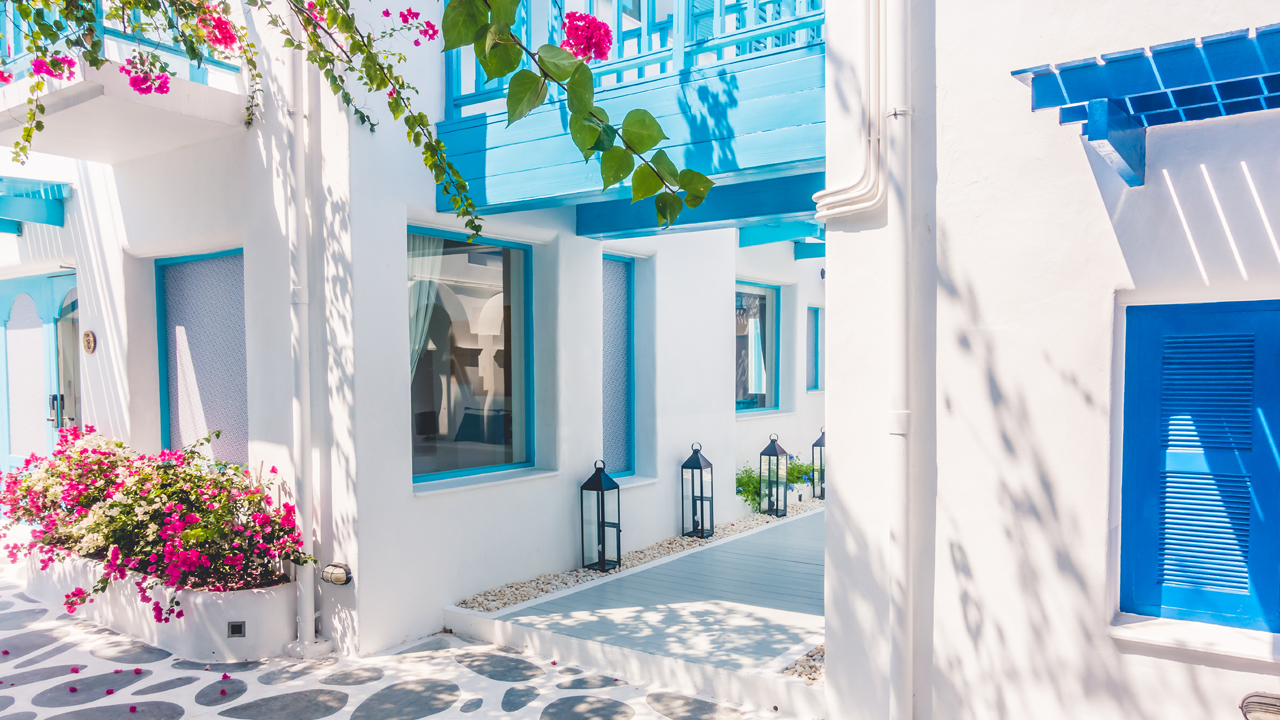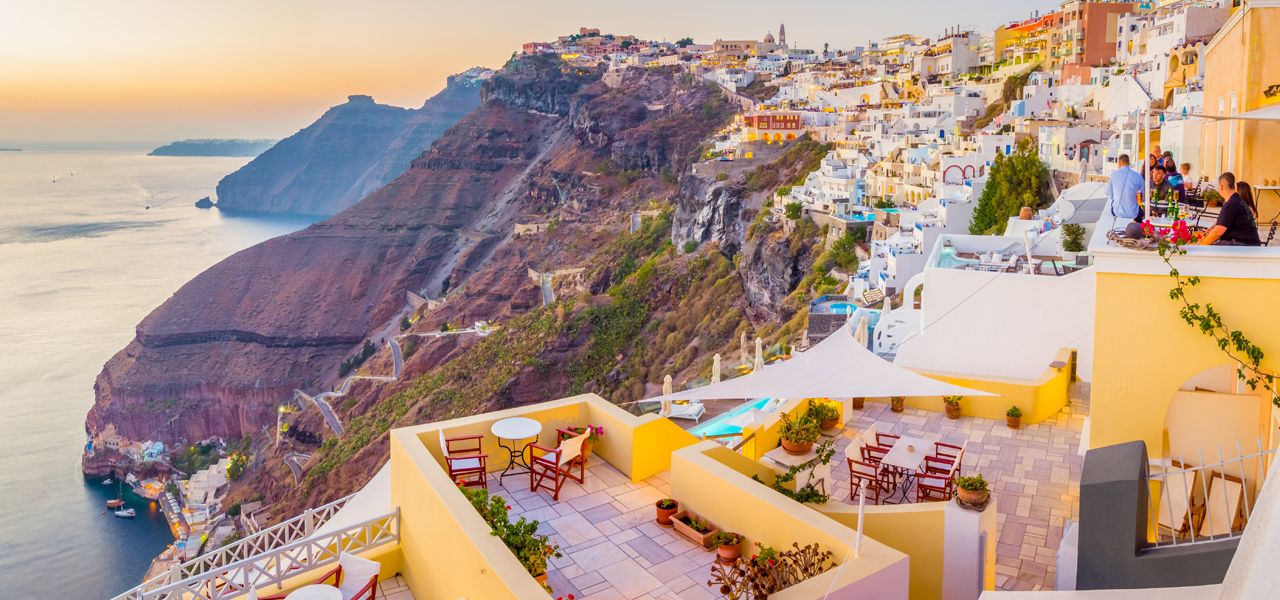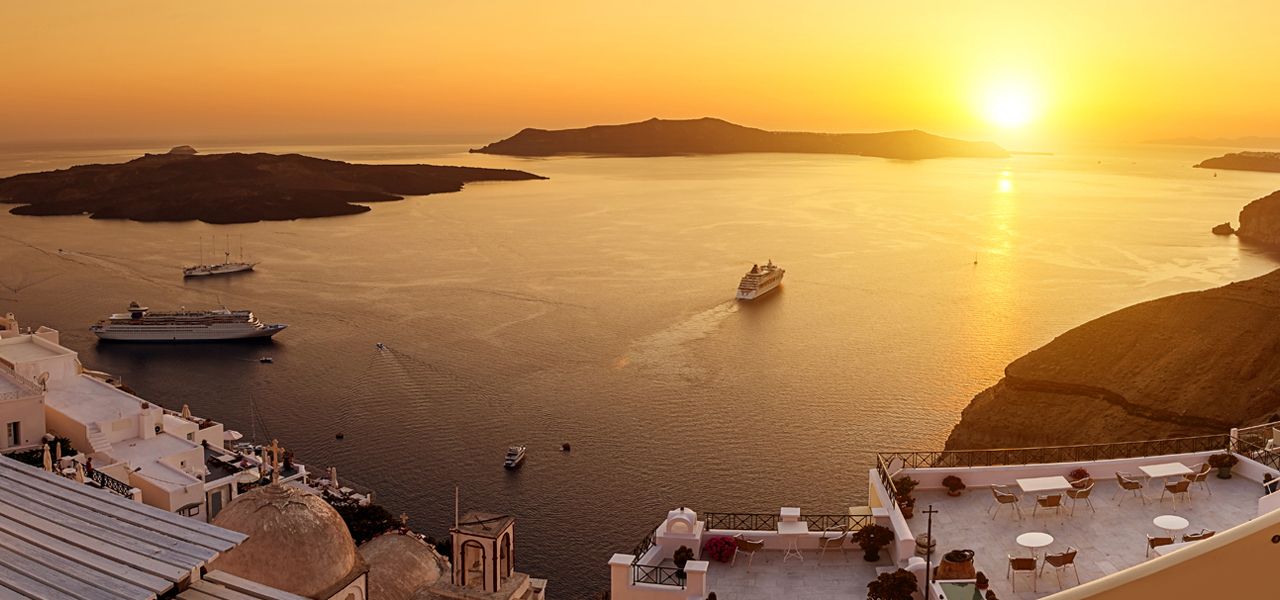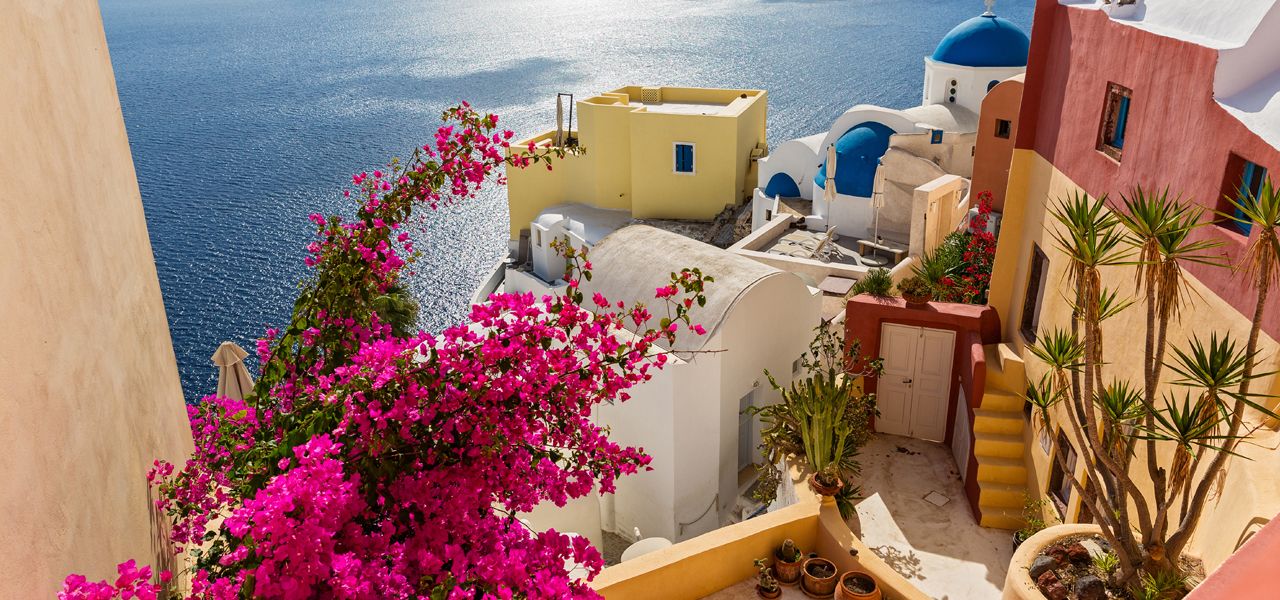“Before landing on Santorin and mixing ourselves with its people, we must consider for a brief space the particular feature of the island, namely, the volcano. The Hephaestus, as they call it, has made of Santorin, one of the most terrible spots in the world, and has had a powerful influence on its inhabitants…
…All round this central basin, which is the cone of the volcano, …the island presents a frontage of precipitous volcanic cliffs, from 500 to 1000 feet in height, all in strata of twisted and contorted volcanic lava, red, green and black, giving the whole place a hideous yet fascinating appearance…
…The depth of the water in this central basin is immense; the cliffs go straight down into it, so that there is no possible anchorage, and the vessels have to be tethered, so to speak, to the shore…
…The soil very light and thin, consisting chiefly of crumbled pumice: it seems favourable for the growth of nothing save the grape: in fact the slopes of Santorin form one vast vineyard…
…The island has at various times and seasons sprung from the submerged volcano, and has been formed by multiplied eruptions. Herodotus is the earliest author who mentions it, and he tells us that in mythical times it had seven towns or villages, and that the earliest inhabitants were Phoenicians…
…When, therefore, did Santorin go under the name of the most beautiful? Was it before the eruptions buried it with the present layer of pumice, or was it after this, when it was level, and exceedingly fertile for the grape? However hideous it may seem to us, we know that our idea of the beautiful and that of ancient Greek differ considerably.
And then it was called Thera. “Was it because it was a monstrosity?” (θηρ, θηρός, a monster… Verily Santorin has changed its name as often as its form, and the Greeks who revived everything that is old, call it Thera in preference to the name Santorin, by which it was known during the Middle Ages…
… But Santorin is a rich and prosperous island and nowhere in Greece do grapes grow so well as here.
So mankind, ever trusting in the lengthened pauses between each convulsion, returned to a life of contentment and security, even though it is over one of the most terrible known craters. What may happen next no one can know. The crater opened outside the circle in 1650; Therasia broke off, when we cannot say; the land in many places has subsided. Another eruption may suddenly come on, and cover Thera with feet of pumice or engulf her in the sea. And yet the inhabitants are happy, and amass money year by year; for, as say the Greeks, “he who has money has a tongue.” After Syra, nowhere in the Cyclades are there so many well – to – do people as there are in Santorin.
The action of this volcano must have had, in the course of ages, powerful influence over the inhabitants; for, from their position, the towns, built on the edge of the cliff overlooking the basin, are as if placed in an amphitheatre to overlook the mysterious workings of their volcano…
…After these few remarks on the nature of the island we were about to visit the reader will better understand the impressions created. It is a hideous island, fascinating in its hideousness. No swallows build their nests here, no frogs are to be found on it, and the scaros, a fish by no means common in other parts of Greece, is a constant visitor to these mysterious waters…
… On entering the basin of Santorin one experiences directly the pleasant impression of seeing something utterly new. To the left we were swiftly borne past a white line of houses perched along the edge of blood red rocks which form the northernmost point of the island. This is Epanomeria. Further on the red promontory of Scaros juts out into the basin, and on it are the crumbling ruins of the medieval fortress; above this, on black rocks, is perched the white village of Meroviglia, a 1,000 feet above the sea, which commences a long line of white houses, nearly two miles in extent, which blends itself with Phera, the present capital of the island.
The steamer stopped in front of a nest of houses, clinging to the cliff, which forms the little port. And what astounding houses they are! For the most part holes chiseled in the soft volcanic rock, and faced with a fronting of stone, in which a door, a window above it, and perhaps one in each side. Half the inhabitants of Santorin, in spite of the encouragement given by the government to the building of regular houses, prefer to live like rabbits in the ground. The capital and one or two of the principal villages now boast of handsome houses properly built, but some of the remote villages are still rabbit warrens excavated in the pumice – stone rock as they have been for centuries.
The wall of rock is ascended by a newly made zigzag path, which joins Phera and her port, 950 feet beneath – are composed of countless layers of volcanic eruptions in contorted lines of black and red; here and there a little verdure clings to the cliff; here and there little houses peep, like owls, from out of the rocks…
…Really if Phera, as the capital of Thera, had but few trees to shelter it, it would be an inviting residence in the summer, perched, as it is, high above the sea level, and commanding views of an astonishing character over the basin, the volcanic islands and the distance. There are delightful walks on the cliff to the right and left and there is a pleasant air of prosperity in the place…The parish church of Phera is a curious object to look upon: it is built out of bits of red lava, which look like irregular bricks fastened together with excellent cement made out of Santorin pumice – stone…St Peace, that is to say, St Irene, the Byzantine empress, who supplied Thera with its new name, is the protectress of the island…
…Close to where we landed on New Burnt Island the water is of a bright orange colour; we had noticed this from the other side, and were curious to examine it. The water, likewise, is almost at boiling heat in parts, and where it was cooler we bathed our feet, for a hot foot – bath is a rarity in the Cyclades…
…Below Meroviglia the red rock on which Scaros is built juts out into the bay; on the top of it is the castle of the mediaval rulers, and around cluster the old houses which were abandoned only twenty years ago because they were falling into the sea…Few visit the spot now, for the approach is difficult…
…The Santoriniotes treat the vine differently to other islanders, for here they plough their vine – yards instead of digging them…The wine of Santorin is certainly most excellent, and is drunk largely in Russia; much too, finds its way, via France to England under the name of claret…But the best wine in the island is a white one called “of the night” (της νυκτός) because the grapes of which it is made are gathered before sunrise, and are supposed to have a better aroma from this cause. They make more wine here than anywhere else in Greece; they have seventy different kinds of grapes, the best of which are chosen for making that abominably luscious production called “vino Santo”...Without her vineyards Santorin would be a desert…
…we visited many of these dug –out houses, and found their inhabitants prosperous and sharp – witted. From what I saw I think the Santoriniotes are the sharpest Greeks I have ever met; they indulge into neat expressions too…”
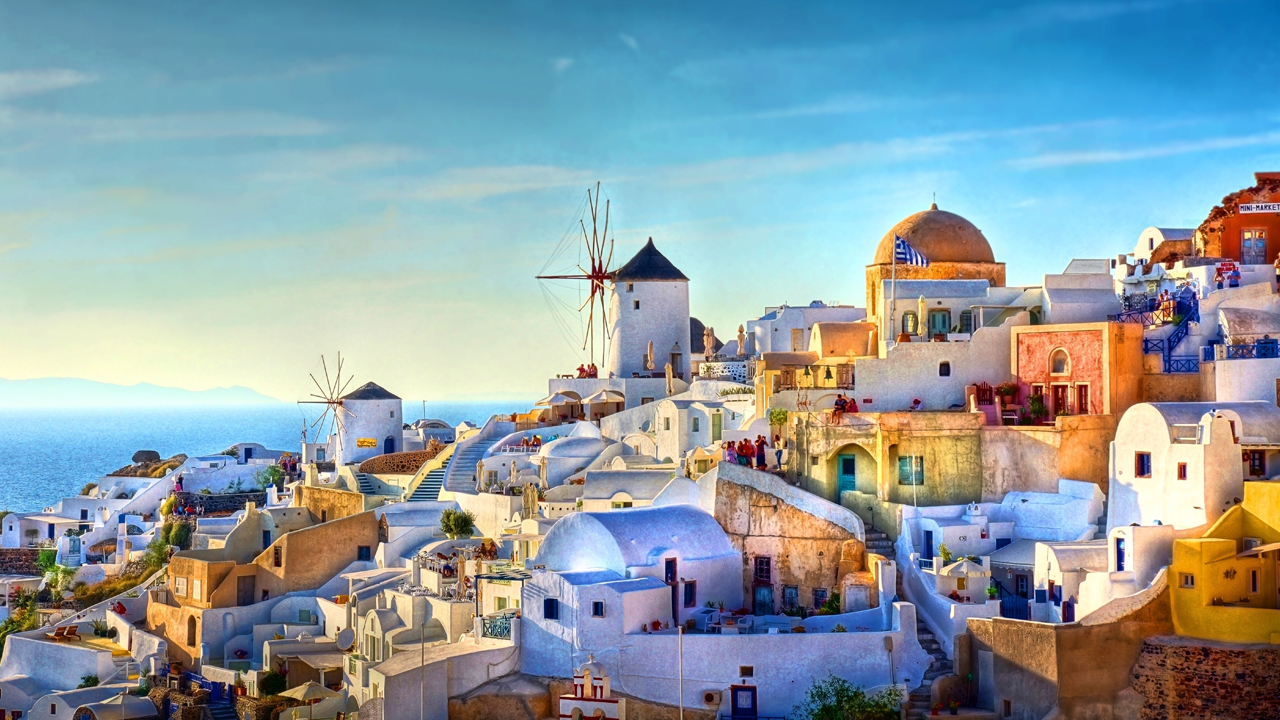
My, my, what a difference 135 years make!
All the above are excerpts from James Theodore Bent's book “The Cyclades”, “Life among the insular Greeks”. Bent was an Oxfordian archaeologist, historian and explorer who dedicated his life to research in the Levant and Africa. After extended tours of the Cycladic islands between 1882 and 1884 he, Bent published in 1885 what has become a classic account of his discoveries in what is now one of the most popular tourist regions of Greece.
What through his detailed impressions prove is that while almost everything remains the same, all seems to be different:
The island’s trademark, Caldera (Spanish term, from Latin caldaria ‘boiling pot’) is there, active and holds a worldwide record or phenomenon, being the only inhabited caldera in the world; the two-mile thick white line of cliff-hanging houses and the dug-out rabbit warrens are still there, except now they got smarter with spas and pools installed – the majority housing some of Greece's finest and priciest hotel suites – justifying the “one million dollar something” notion: a square plethron of bare land there can cost more than one million euros; along with the assyrtiko, vinsanto is always there, but the island’s pumice ground desert gives life to some unique, found nowhere else in the world. These local products meet their destiny in the mouthwatering, divine recipes of the island’s “Gourmet Dream Team”, the inspired chefs and restaurateurs who have validated Santorini as the outmost epicurean destination of the Big Blue; Akrotiri, the Aegean’s prehistoric Pompeii in a way, is here as east Med’s most important discovery; and, of course, the mind-blowing view is there with cooing couples making out and honeymooners on donkeys clicking selfies while others sip bellinis in operatic music surroundings, all of them, dangling on the edge of the caldera, devouring the sunset in swarms, clapping at the same time when the dying sun rays dip into Poseidon’s kingdom.
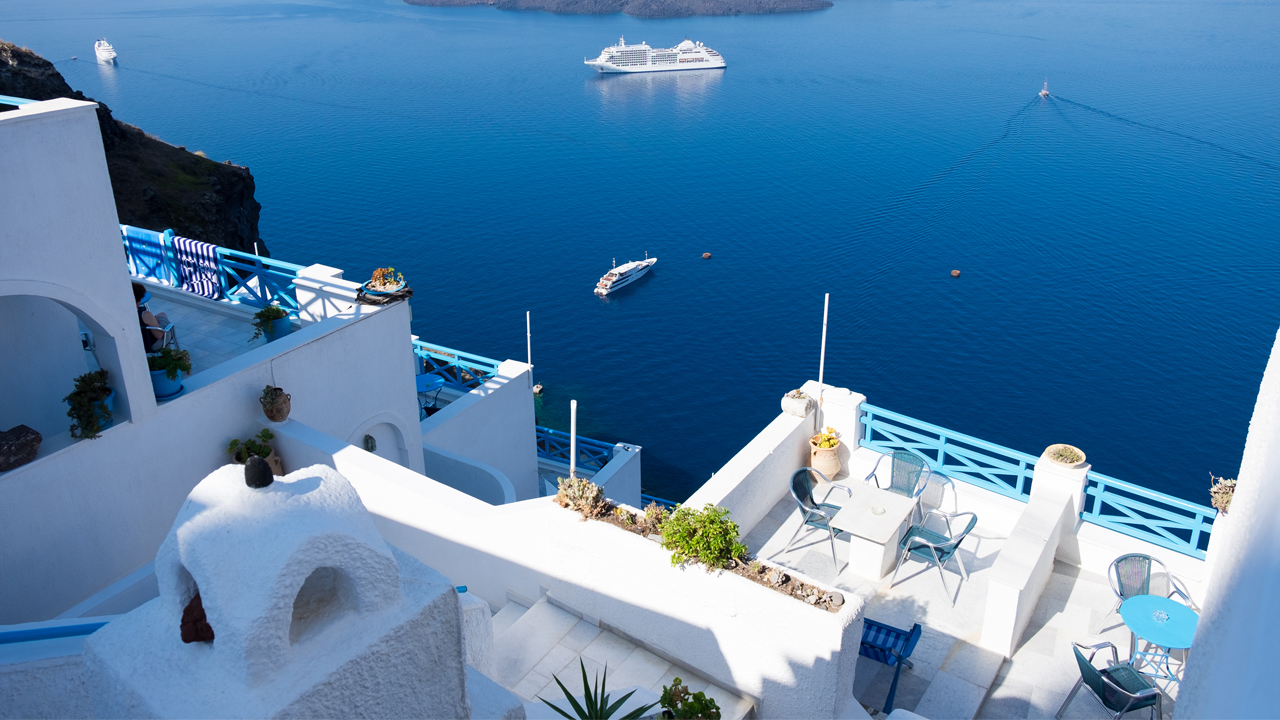 Quod erat demonstrandum: ‘Beauty Lies in the Eye of the Beholder’, going hand-in-hand with the evolution of civilization and the transformation of contemporary society values, thus, sentencing Santorini to be Greece’s “postcard island” for many; due to its “fascinating hideousness”, Vulcan’s mysterious workshop is Greece’s most famous island, and features among the most romantic destinations in the world.
Quod erat demonstrandum: ‘Beauty Lies in the Eye of the Beholder’, going hand-in-hand with the evolution of civilization and the transformation of contemporary society values, thus, sentencing Santorini to be Greece’s “postcard island” for many; due to its “fascinating hideousness”, Vulcan’s mysterious workshop is Greece’s most famous island, and features among the most romantic destinations in the world.
Yet, and in James Bent’s defense, this seems to be Santorini’s everlasting and exclusive prerogative: the “daughter of the great fury”, as the Nobel Greek poet Odysseus Elytis calls her, has always been disjunctive; some, of bipolar syndrome alike, “either/or” place. The Aegean’s archipelago persona cannot be grey; she is either black or white: calm or wild; romantic or pragmatist; a flabbergasting socialite or a shut up clam, cosmopolitan or reclusive. Prosperous or poor, like a retro cinema vamp star, will not forgive inertia; you either love it or you hate it. And those who love it strive not to be just tourists here; they want to live here; to become themselves a glass of assyrtiko, a balos dance at her modern symposia and local feasts. And those who don’t, they don’t really have an option, but soon to be self-expelled as one-time passing tourists.
On a closing reminder, clearly to his disadvantage, Bent, like all good Victorians avoiding the sun whenever possible, island-hopped in the middle of winter. On page 116 of his book the intrepid scholar notes: “Altogether Santorini is an awe- inspiring spot, and we did not whether to be glad or sorry when the steamer went away and left us for a fortnight’s stay in Vulcan’s place”. Should he have been able to wanderlust Santorini today, oh, how sorry would he be when his fortnight were over!
